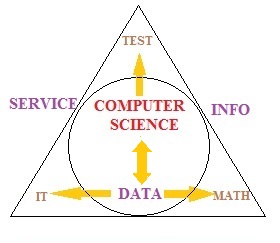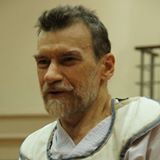Set Theory
Homework Help & Tutoring
We offer an array of different online Set Theory tutors, all of whom are advanced in their fields and highly qualified to instruct you.
Set Theory
Set theory is an area of mathematics that focuses on collections of objects, called sets. While any object can be collected into sets, set theory is usually applied to objects with mathematical relevance.
Modern set theory was developed by Richard Dedekind and Georg Cantor in the 1870s. After the discovery of the naive set theory paradoxes, a number of axiom systems were proposed in the early twentieth century, most notably the Zermelo-Fraenkel axioms.
Set theory language can be used in the definitions of just about all mathematical objects, and set theory concepts are widely dispersed in various mathematics curricula at all levels. Simple facts about sets and set membership, including Venn diagrams, Euler diagrams, union, and intersection, can be introduced at the primary grade levels. More advanced concepts like cardinality are a normal component of undergraduate curricula.
Contemporary set theory research covers a wide range of topics, from real number line structure to large cardinal consistency.
A course in set theory will normally cover the following topics:
- Sets
- Relations, Functions, and Orderings
- Natural Numbers
- Finite, Countable, and Uncountable Sets
- Cardinal Numbers
- Ordinal Numbers
- Alephs
- The Axiom of Choice
- Arithmetic of Cardinal Numbers
- Sets of Real Numbers
- Filters and Ultrafilters
- Combinatorial Set Theory
- Large Cardinals
- The Axiom of Foundation
- The Axiomatic Set Theory
Students will be able to find plenty of books on set theory from Google Books and Amazon.com. For a tutorial, Javier R. Movellan's excellent set theory tutorial is a must. A good journal that students should follow is Elsevier's Fuzzy Sets and Systems, their International Journal in Information Science and Engineering. The Math Archives' Logic and Set Theory, made available by the University of Tennessee at Knoxville, offers a terrific compilation of references for this topic.
To fulfill our tutoring mission of online education, our college homework help and online tutoring centers are standing by 24/7, ready to assist college students who need homework help with all aspects of set theory. Our mathematics tutors can help with all your projects, large or small, and we challenge you to find better online set theory tutoring anywhere.
College Set Theory Homework Help
Since we have tutors in all Set Theory related topics, we can provide a range of different services. Our online Set Theory tutors will:
- Provide specific insight for homework assignments.
- Review broad conceptual ideas and chapters.
- Simplify complex topics into digestible pieces of information.
- Answer any Set Theory related questions.
- Tailor instruction to fit your style of learning.
With these capabilities, our college Set Theory tutors will give you the tools you need to gain a comprehensive knowledge of Set Theory you can use in future courses.
24HourAnswers Online Set Theory Tutors
Our tutors are just as dedicated to your success in class as you are, so they are available around the clock to assist you with questions, homework, exam preparation and any Set Theory related assignments you need extra help completing.
In addition to gaining access to highly qualified tutors, you'll also strengthen your confidence level in the classroom when you work with us. This newfound confidence will allow you to apply your Set Theory knowledge in future courses and keep your education progressing smoothly.
Because our college Set Theory tutors are fully remote, seeking their help is easy. Rather than spend valuable time trying to find a local Set Theory tutor you can trust, just call on our tutors whenever you need them without any conflicting schedules getting in the way.






